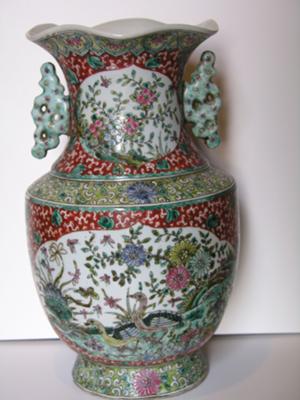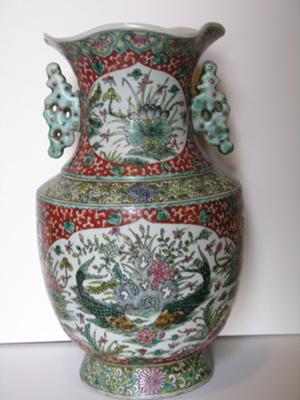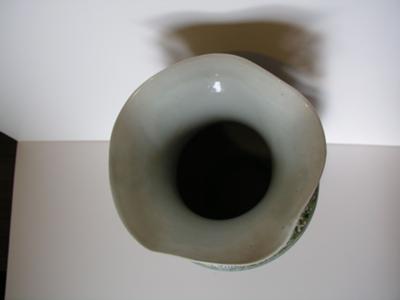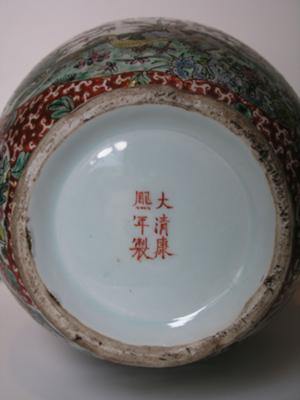Commenting is deactivated.
Please post all new topics and queries to the
Discussion Forum
Q'ing Period Chinese Vase or in style of?
by Marsuel
(Minneapolis, MN USA)

Side 1 of Vase

Side 2 of Vase

View of Vase Interior

Mark on Base of Vase
I purchased this Chinese vase at an estate sale about 10 years ago and would appreciate any thoughts on what I might have from those of you with experience in Chinese porcelain. From comparing the mark on the bottom to marks I found on-line, it looks hand written (at least to my very inexperienced eye) and like it could be a Q'ing dynasty mark (assuming it is real). The vase is about 13" tall. I've attached four pictures, one of each side of the vase (since the design is slightly different on each side), a shot down into the vase from the top, and a photo of the mark on the base. Thanks for your time. I appreciate this website. I've learned a lot by just looking at past postings.








